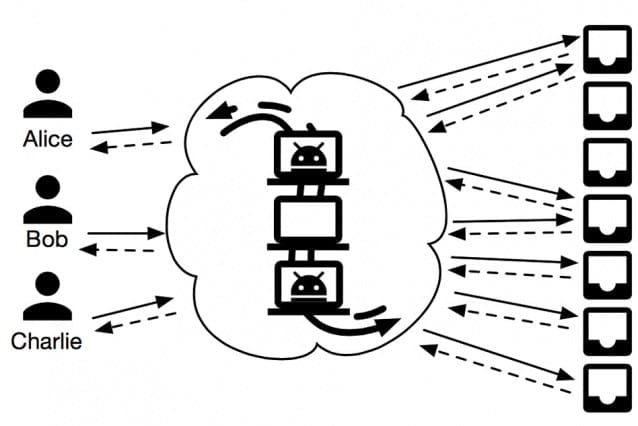
The ranks of older and frail adults are growing rapidly in the developed world, raising alarms about how society is going to help them take care of themselves in their own homes.
Naira Hovakimyan has an idea: drones.
The University of Illinois roboticist recently received a $1.5 million grant from the National Science Foundation to explore the idea of designing small autonomous drones to perform simple household chores, like retrieving a bottle of medicine from another room. Dr. Hovakimyan acknowledged that the idea might seem off-putting to many, but she believes that drones not only will be safe, but will become an everyday fixture in elder care within a decade or two.
“I’m convinced that within 20 years drones will be today’s cellphones,” she said.
Her research is just one example of many approaches being studied to use technology to help aging people.
Even though fully functioning robot caregivers may be a long way off, roboticists and physicians predict that a new wave of advances in computerized, robotic and Internet-connected technologies will be available in coming years to help older adults stay at home longer.
“Loneliness is at epidemic levels among elders in the U.S. today,” said Juliet Holt Klinger, senior director of dementia care and programs at Brookdale Senior Living, one of the nation’s largest providers of assisted living and home care.
Brookdale is using a variety of Internet-connected services to help aging clients stay more closely connected with family and friends. Ms. Holt Klinger said there was growing evidence that staying connected, even electronically, offsets the cognitive decline associated with aging. “We have story after story of reconnection with families through Skype,” she added.
For all the promising ideas, however, skeptics also note that many ideas are “technologies looking for a solution” that inevitably fail the test of practicality.
“We all get really excited on the upside, and then we go through this trough of disillusionment,” said Laurie Orlov, a business analyst who began the Aging in Place Technology Watch blog in 2008.
Even so, examples of robotic and artificial-intelligence-derived technologies that will be commercially available in the next decade include intelligent walkers, smart pendants that track falls and “wandering,” room and home sensors that monitor health status, balancing aids, virtual and robotic electronic companions, and even drones.
In her lab, Dr. Hovakimyan has begun experimenting with small and large drones.
Read more: As Aging Population Grows, So Do Robotic Health Aides
The Latest on: Robotic health aides
[google_news title=”” keyword=”robotic health aides” num_posts=”10″ blurb_length=”0″ show_thumb=”left”]
via Google News
The Latest on: Robotic health aides
- Attention Nurses: Chipotle Is Giving 100,000 Healthcare Workers Free Burritos This Weekon May 1, 2024 at 9:53 am
Chipotle is here to honor healthcare workers in the best way by giving away $ 1 million in burritos. Here's how to get yours.
- Tractor-trailers with no one aboard? The future is near for self-driving trucks on US roadson April 30, 2024 at 5:30 am
Within three or four years, thousands of self-driving tractor-trailers are expected to travel on America’s public freeways.
- SOVAH Health makes surgical advancement with new roboton April 29, 2024 at 6:04 pm
DANVILLE, Va. (WDBJ) - SOVAH Health is unveiling a new robot that will help surgeons perform complex operations and possibly save patients some money.
- Hope for robotics to help diagnose and treat lung cancer in one procedureon April 29, 2024 at 5:01 pm
There are hopes that lung cancer could be diagnosed and removed from patients in one sitting in the future thanks to robotics, according to medics trialling the technology. The method allows doctors ...
- Vote for the winner of the high school Student of the Week in The Patriot Ledgeron April 29, 2024 at 1:30 am
Here are this week's nominees for Student of the Week. Nominations come from high school staff members. But you, our readers, make the decision in our poll found at the bottom of this story. Look for ...
- Cheshire Medical implements its first robotic-assisted surgical systemon April 26, 2024 at 6:30 pm
Cheshire Medical Center in Keene has added a new member to its team — a surgical robot. The Dartmouth Health affiliate began using its da Vinci Xi robotic-assisted surgical platform April 15 to ...
- St. Louis teacher’s aide charged with assaulting six-year-old studenton April 25, 2024 at 4:12 pm
Authorities charge a St. Louis public school teacher’s aide with assaulting a six-year-old student. According to court documents, witnesses say Gregory Filben slammed the child’s head ...
- News Archives April 2024on April 23, 2024 at 5:00 pm
Editorial endorsement May 2024: Vote ‘yes’ on extending Portland’s gas tax Editorial endorsement May 2024: Vote 'yes' on renewing PPS teachers levy Liz Weston: Capitol gains on condo gift can depend ...
- A Private School Promised to Help Troubled Kids. Instead, Some Say, It Was a Nightmareon April 23, 2024 at 10:37 am
The New School in Delaware was supposed to provide a safe haven — but some parents and kids allege it was more like a “cult” ...
- Cook County Health Celebrates the Launch of New Robotic Surgery Programon April 18, 2024 at 1:14 pm
Chicago, IL, April 18, 2024 (GLOBE NEWSWIRE) -- On April 17, Cook County Health cut the ribbon on its Intuitive da Vinci® surgical system, celebrating the health system’s new robotic surgery program.
via Bing News










